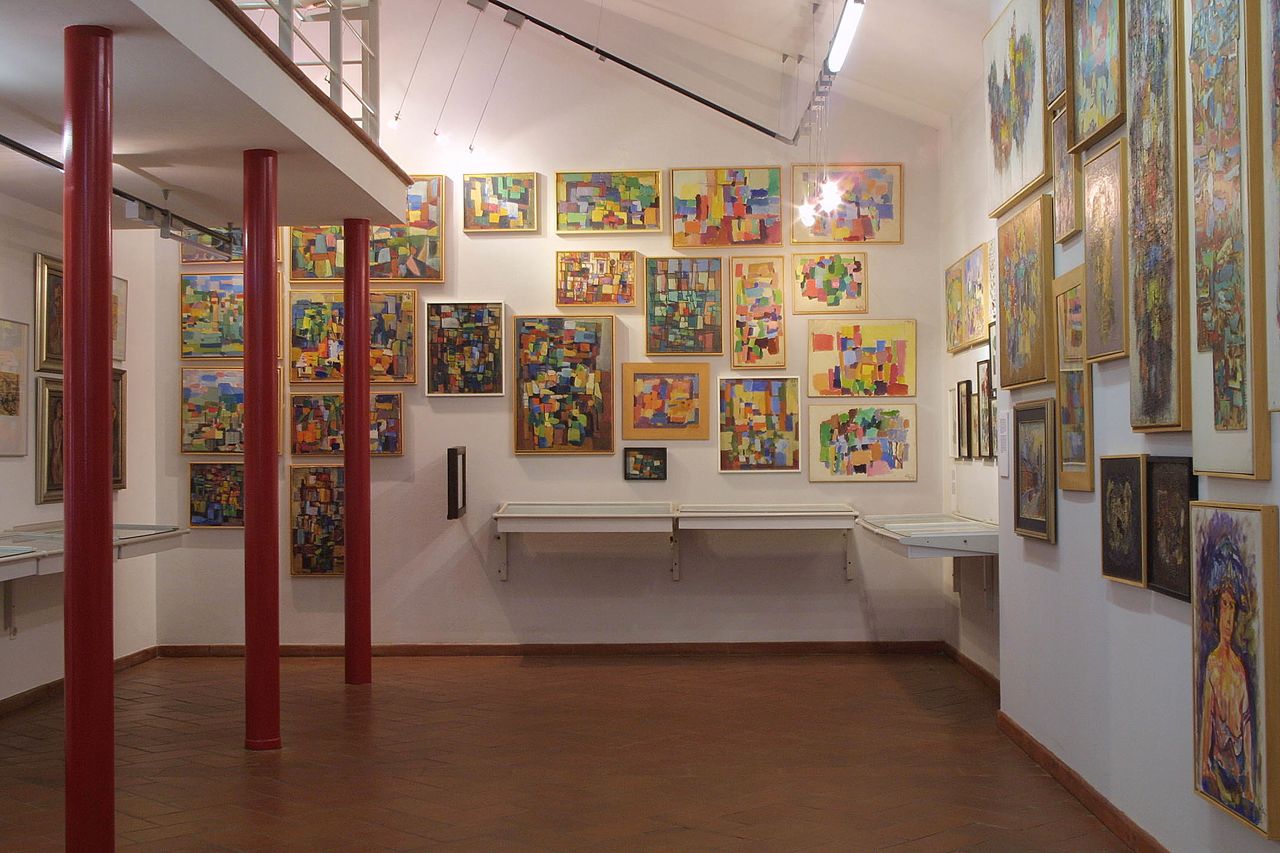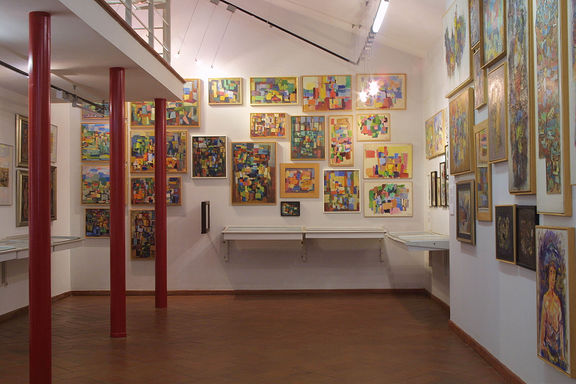Difference between revisions of "Avgust Černigoj Gallery, Lipica"
m (fertik) |
(Lipica Stud Farm) |
||
| Line 24: | Line 24: | ||
{{Teaser| | {{Teaser| | ||
| − | [[Avgust Černigoj Gallery, Lipica|Avgust Černigoj Gallery]] comprises a collection of around 1400 works of [[Avgust Černigoj]] (1898–1985), a key figure of Constructivism and the Slovene historic avant-garde artistic scene. The Gallery is part of the Lipica Stud Farm (the cradle of the Lipizzaner horse) in the village Lipica, where Černigoj spent the last five years of his life. The permanent exhibition installation of around 400 works was set up by [[Novi kolektivizem (NK)]]. The gallery is run by [[Goriška Museum]]. | + | [[Avgust Černigoj Gallery, Lipica|Avgust Černigoj Gallery]] comprises a collection of around 1400 works of [[Avgust Černigoj]] (1898–1985), a key figure of Constructivism and the Slovene historic avant-garde artistic scene. The Gallery is part of the [[Lipica Stud Farm]] (the cradle of the Lipizzaner horse) in the village Lipica, where Černigoj spent the last five years of his life. The permanent exhibition installation of around 400 works was set up by [[Novi kolektivizem (NK)]]. The gallery is run by [[Goriška Museum]]. |
}} | }} | ||
| + | ==Avgust Černigoj== | ||
Born in Trst/Trieste, [[Avgust Černigoj]] graduated in Bologna, Italy, and then went to Germany to study at Munich Academy. Soon he discovered the new experimental art school Bauhaus. The short but intensive Weimar period had a profound influence on Černigoj's artistic development and gave an indelible and recognisable character to his personality, as well as to most of his works. He became enthusiastic about Abstraction, represented in those times by Kandinsky and Klee at the Bauhaus, and above all about Constructivism. Černigoj remained more or less faithful to Constructivist principles for his entire life. He introduced an important novelty: collage, through which he created not only new artistic values but also changed the way of understanding artistic work. During his life he participated in numerous exhibitions, both at home and abroad. Although bitterly rejected at the beginning and not widely understood, Černigoj later won some awards for his work, among them the [[Prešeren Award and Prešeren Foundation Awards|Prešeren Award]] for lifetime achievement. | Born in Trst/Trieste, [[Avgust Černigoj]] graduated in Bologna, Italy, and then went to Germany to study at Munich Academy. Soon he discovered the new experimental art school Bauhaus. The short but intensive Weimar period had a profound influence on Černigoj's artistic development and gave an indelible and recognisable character to his personality, as well as to most of his works. He became enthusiastic about Abstraction, represented in those times by Kandinsky and Klee at the Bauhaus, and above all about Constructivism. Černigoj remained more or less faithful to Constructivist principles for his entire life. He introduced an important novelty: collage, through which he created not only new artistic values but also changed the way of understanding artistic work. During his life he participated in numerous exhibitions, both at home and abroad. Although bitterly rejected at the beginning and not widely understood, Černigoj later won some awards for his work, among them the [[Prešeren Award and Prešeren Foundation Awards|Prešeren Award]] for lifetime achievement. | ||
| − | |||
==See also== | ==See also== | ||
*[[Goriška Museum]] | *[[Goriška Museum]] | ||
| − | *[[ | + | *[[Lipica Stud Farm]] |
*[[Novi kolektivizem (NK)]] | *[[Novi kolektivizem (NK)]] | ||
Revision as of 04:57, 15 June 2011
-
to
9 May 2015
26 Jul 2015
Bauhaus – Networking Ideas and Practice (BAUNET), an exhibition also also featuring the works of August Černigoj from the collections of the Avgust Černigoj Gallery, Lipica and the Slovenian Theatre Institute
Avgust Černigoj
Born in Trst/Trieste, Avgust Černigoj graduated in Bologna, Italy, and then went to Germany to study at Munich Academy. Soon he discovered the new experimental art school Bauhaus. The short but intensive Weimar period had a profound influence on Černigoj's artistic development and gave an indelible and recognisable character to his personality, as well as to most of his works. He became enthusiastic about Abstraction, represented in those times by Kandinsky and Klee at the Bauhaus, and above all about Constructivism. Černigoj remained more or less faithful to Constructivist principles for his entire life. He introduced an important novelty: collage, through which he created not only new artistic values but also changed the way of understanding artistic work. During his life he participated in numerous exhibitions, both at home and abroad. Although bitterly rejected at the beginning and not widely understood, Černigoj later won some awards for his work, among them the Prešeren Award for lifetime achievement.
See also
External links
- Avgust Černigoj Gallery web page
- Avgust Černigoj on Wikipedia
- Avant-garde Design Beyond Borders: The Slovenian Constructivist Avgust Černigoj (Paper presented at the International Association of Societies of Design Research conference in 2009)
- Lecture on Trieste Constructivist Ambient by Dragan Živadinov on VideoLectures.Net (in Slovenian)
 Avgust Černigoj (1898–1985) is credited with influencing Slovene Fine Art by introducing Constructivism to Slovenia. +
Avgust Černigoj (1898–1985) is credited with influencing Slovene Fine Art by introducing Constructivism to Slovenia. +


